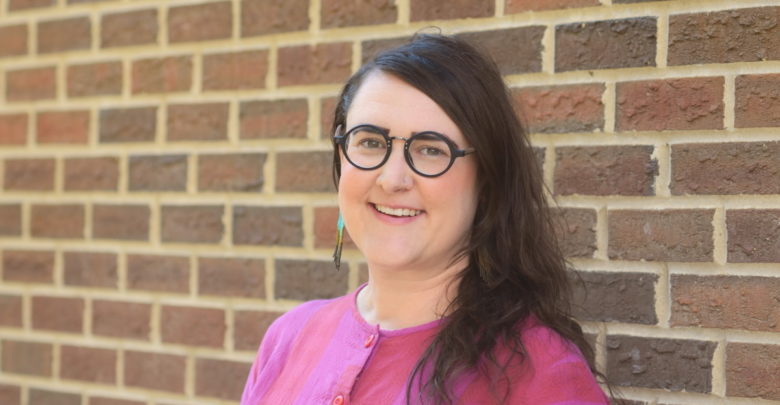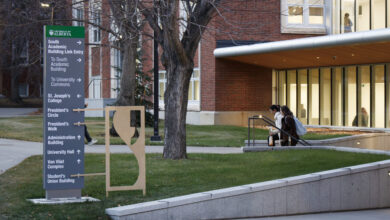Researcher’s study on slow fashion uncovers our dependency on our stuff
A local blogger's yearlong experiment wearing a single dress can teach us a lot about how we rely on our stuff, says U of A researcher
 Christien Ford
Christien FordIn 2015, Alberta blogger Elizabeth Withey documented her experience wearing the same dress every day for a year. Four years later, University of Alberta human ecology student Jessica Kennedy realized Withey’s blog would make an excellent case study.
Jessica Kennedy began reflecting on material culture long before she discovered Withey’s blog. The part-time student received her undergraduate degree in human ecology in 2004, and has since owned a clothing store, stopped shopping for a year, and participated in the minimalist fashion challenge Project 333, all before deciding to pursue a master of arts in material culture at the University of Alberta.
“I was doing all these self-experiments, wondering why, what was going on? I have enough clothes… [I thought,] Why do I continually want more?” Kennedy explained. “I realized that a master’s degree might be a really great place to explore, fundamentally, my relationship with things, and ideally be able to extrapolate that to other people.”
In her 2019 paper “Entanglements of a Dress Named Laverne: Threads of Meaning between Humans and Things (and Things),” Kennedy reflects on what she calls an “intimate relationship” between Withey and her dress, Laverne.
Using Withey’s blog Frock Around the Clock as her primary source, Kennedy explores archaeologist Ian Hodder’s theory of entanglement. In his book Entangled: An Archaeology of the Relationships Between Humans and Things, Hodder proposes three themes of entanglement: humans depend on things, things depend on things, and things depend on humans. Kennedy’s paper explores how each of these themes appears in Withey’s blog about her relationship with Laverne.
“[Blogs are where] everyday attractions are reflected and written upon. So that is a really great data source, because you know, Elizabeth didn’t go out as an academic wanting to do this,” Kennedy said. “She was just an individual in society who was really curious about her own relationship with clothing… I just thought it came across as a really authentic voice and authentic data.”
Notably, Kennedy examines Laverne’s agency to influence Withey’s actions, particularly when the dress began to pill, stain, and lose colour. At this point, Withey had to find solutions that allowed her to continue wearing Laverne.
“In a sense our relationship [with] things does cause us to take action,” Kennedy said. “Laverne gained more power because Elizabeth had to work with her…It was a really unique and interesting power dynamic.”
Kennedy’s interest in these relationships stems in part from her own self-reflection on slow fashion and the lifespan of material objects. She ultimately hopes her research will encourage people to engage in similar reflections about the lifespan of their things, and their own entanglement with their possessions.
“I just find it so interesting. Every single day, we get up and we get dressed. We pick which clothes to wear. It might be what we laid out the night before, it might be what was closest to us on our bedroom floor but it’s this universal experience,” Kennedy said. “I just think there’s so many unsaid things that go on between humans and things each day.”




